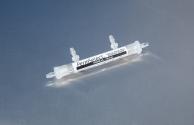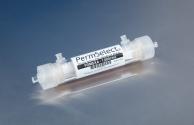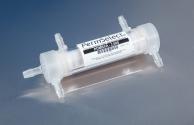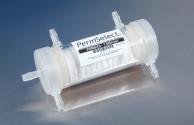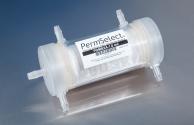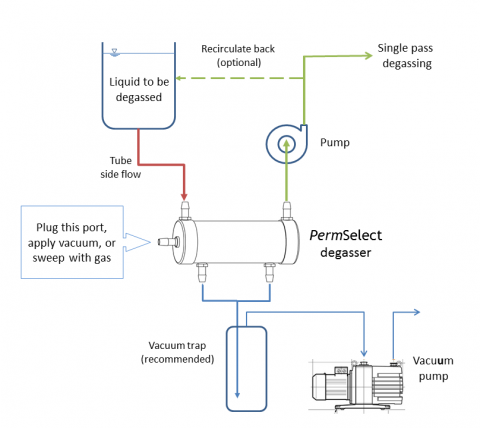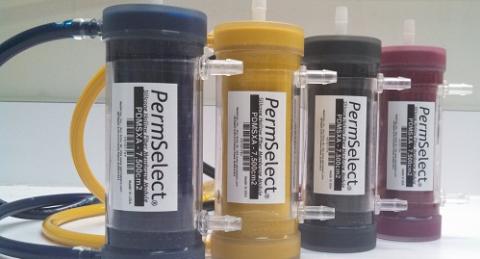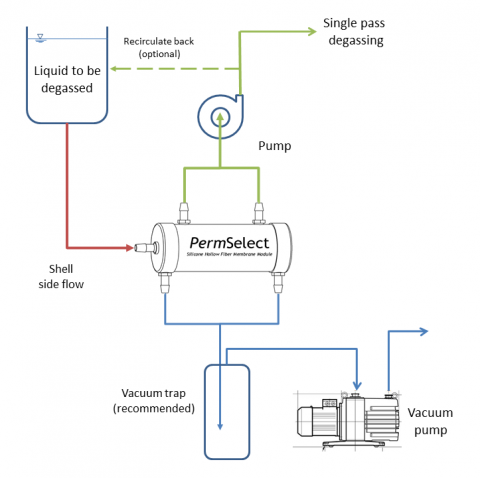What is Degassing?
Liquid degassers, also known as degassing filters and contactors are often an overlooked component of a fluidic system, but they play a critical role in reducing dissolved gasses. This is because dissolved gases in reagent lines can lead to bubble formation, disrupting analysis results and causing errors in your fluidic systems. With our degassers, you can remove bubble-causing gases, ensure optimal performance, and create perfect harmony within all your instruments.
Oxygen, carbon dioxide, and other gases dissolved in water or other liquids can adversely affect many processes. Whether you are in the industrial, pharmaceutical, or semiconductor industry, delivering water that has very low levels of dissolved gases leads to longer equipment life, reduced maintenance, and improved process quality.
Our silicone membrane contactors, degassers (degassing filters), and deareators can be used effectively for continuous, flow-through vacuum degassing of liquids including high purity water, aerated water, low surface tension liquids, and many solvents. Indeed, our membrane degassers and deaerators are one of the most effective degassing methods available. Moreover, unlike other liquid degassing equipment and methods such as direct vacuum chamber degassing and ultrasonic water degassing -which are batch degassing approaches, membrane degassing using a PermSelect® degassing unit can be accomplished in a continuous flow-through mode. PermSelect® degassing units with silicone membranes can be used for:
| View a video demonstrating how to use a PermSelect membrane module to degas a liquid stream. |
- How to remove dissolved gases from water and aerated water?
Water naturally contains dissolved gases, even after purification steps such as reverse osmosis and filtration. When water used for analytical or high purity processes contains dissolved oxygen and carbon dioxide, a number of problems can occur. Scientists and process specialists remove dissolved gases from water using liquid degassing equipment, including membrane degasifier systems, degassing units, and other batch methods such as vacuum degassing chambers. The benefits can be remarkable: reproducible results that meet experimental or regulatory requirements; lower downstream process intensity and longer component life; improved yields of materials in contact with degassed water; reduced issues with corrosion, undesired pH levels and unwanted byproducts
How to remove oxygen from water? Membrane degassing of water to remove oxygen avoids exposing oxygen-sensitive compounds to its effects, and reduces oxidation problems. Oxygen in the presence of other dissolved compounds, such as ammonia, can lead to other types of corrosion that affect piping and components. Dissolved oxygen and other gases can form bubbles, which may negatively affect processes and analytical measurements.
How to remove CO2 from water? In certain applications, such as ultrapure process water, removing CO2 is desirable to improve efficiency of other purification steps. A hollow fiber membrane degasser or deaerator (AKA, contactor) can efficiently remove the CO2, effectively as a CO2 scrubber and extend the life of components. Carbon dioxide in steam can form carbonic acid and carbonate in water, causing accelerated corrosion and affecting readings for pH and conductivity. Removing CO2 can positively affect the process results in applications from ultrapure water in semiconductor manufacturing to productivity in aquaculture.
How to degas Ink?
Dissolved gas and microbubbles in ink can significantly affect the speed and quality of printing. By interrupting droplet formation or pressurization at the ink head, dissolved gases can lead to improper jetting at the time of ink ejection. Beyond poor image quality, nozzle dropouts can cause expensive shutdown of the equipment, and the need for more frequent cleaning.
Degassing ink with a membrane degasser prior to it reaching the print head is a simple process. The ink flows through the degasser on one side of the membrane, while a vacuum is drawn on the other side. Gases dissolved in the ink readily transfer through the membrane to the vacuum side, leaving the ink degassed when it reached the outlet of the degasser.
For providers of ink in closed loop systems, a membrane degasser is used to degas the ink while filling the vacuum-sealed bags. Because the closed system does not allow air to contact the surface of the ink, as some bulk systems do, the need for additional degassing is minimized. This is especially important for white inks, which must be handled carefully to maintain suspension of the TiO2 pigment. In addition, degassing ink while packaging can reduce foaming, which otherwise will slow the fill process.
- How to Degas Liquids using PermSelect® Membrane Contactors and Degassers?
Degassing liquids using PermSelect® degassing filters and membrane contactors is straightforward as illustrated in the figure below. Liquid with dissolved gases is contained in a reservoir, or a continuous feed is supplied upstream from the membrane contactors or degasser. A pump may be placed in the circuit (upstream or downstream from the membrane contactor) if needed to provide a required flow rate through the system. The simplest method to degas a liquid is to use straight vacuum to remove all dissolved gases from the liquid. As shown in the figure below, liquid enters the center port of the PermSelect® membrane contactor, then flows on the outside of the hollow fibers (shell side) and exits the at side ports (shown on top of the module). Vacuum is applied at the ports on the end caps which provide vacuum to the inside (lumen side) of the hollow fibers. As liquid flows through the hollow fiber bundle, dissolved gases permeate the hollow fiber walls driven by the vacuum in the lumens. Extracted gases flow toward the vacuum pump and degassed liquid exits the side ports of the degasser.
Liquid degassing can be accomplished continuously with a single pass through the degasser or membrane contactor or with multiple passes by recirculating the fluid through a reservoir. The choice will depend on the system design, the capacity of the degassing filter module to remove gases, and the required level of degassing. Other considerations include liquid-membrane compatibility, and the system fluid pressures. Please view the silicone chemical compatibility chart as an initial substance compatibility guide. Depending on your system pressure requirements, a swapping of liquid flow side and vacuum (a lumen side liquid flow) may be required. The maximum recommended trans-membrane pressure (TMP) for shell side liquid flow is 15 psi. So if your system exceeds this TMP then a lumen side liquid flow (as shown in the figure at the top of this page) is recommended up to 45 psi TMP.
How to Remove Air Bubbles from Viscous Liquids and Gels?
Removing air bubbles from a viscous liquid can be challenging, but PermSelect® membrane degassers enable degassing and de-bubbling viscous liquids in a continuous manner, provided the viscous liquid can be driven (i.e., pumped) through the degasser without exceeding the membrane degasser's pressure specifications. Moreover, because our membrane modules can tolerate high temperatures, in many cases it is possible to increase the liquid temperature to decrease its viscosity, thereby allowing degassing and de-bubbling within the pressure specifications.
Please Contact Us to discuss any of the related topics covered on this page including:
degasser
degassing filters
aerated water
deaerator
degassing wine
ultrasonic degassing
de aired water
membrane contactor
wine degasser
degassing co2 from water
co2 scrubber
degassing water
remove oxygen from water
vacuum degasser
degassing unit
co2 removal
removing oxygen from water
remove oxygen from water
water degasser
membrane degasser
degassing silicone
degassing wine
ultrasonic degassing
vacuum degassing
how to remove oxygen from water
degassing tower aquaculture
how to remove dissolved oxygen from water
degasifier
membrane degasifier
degasser unit
co2 degassing
oil degassing
how to degas water
how to extract oxygen from water
degassed water
de aired water
degassing equipment
degassers
degassing solvents
Contact an applications engineer, or call +1 (734) 769-1066 to discuss your particular liquid degassing needs.
MedArray provides its PermSelect® membrane contactors and degassers for vacuum liquid degassing directly to researchers, and to industry through original equipment manufacturers (OEM’s) who are interested in integrating degassing solutions in their equipment. We can also customize membrane modules to your specific application. Contact us to discuss your custom application.

